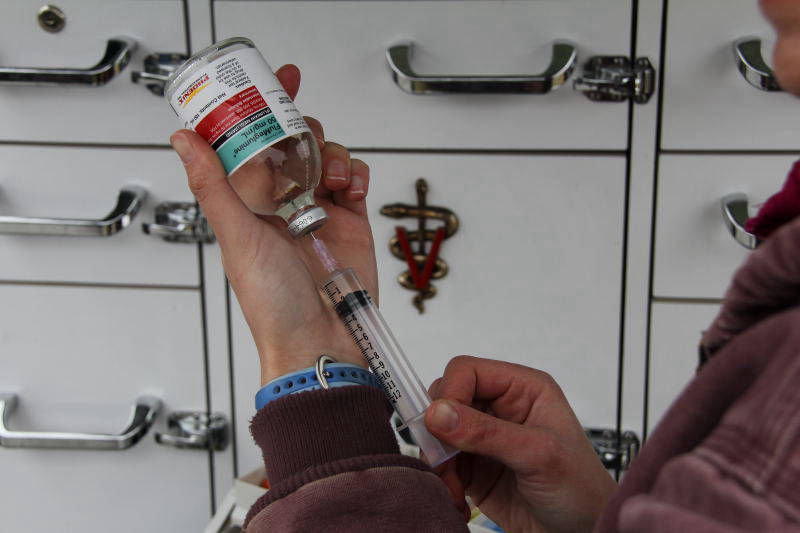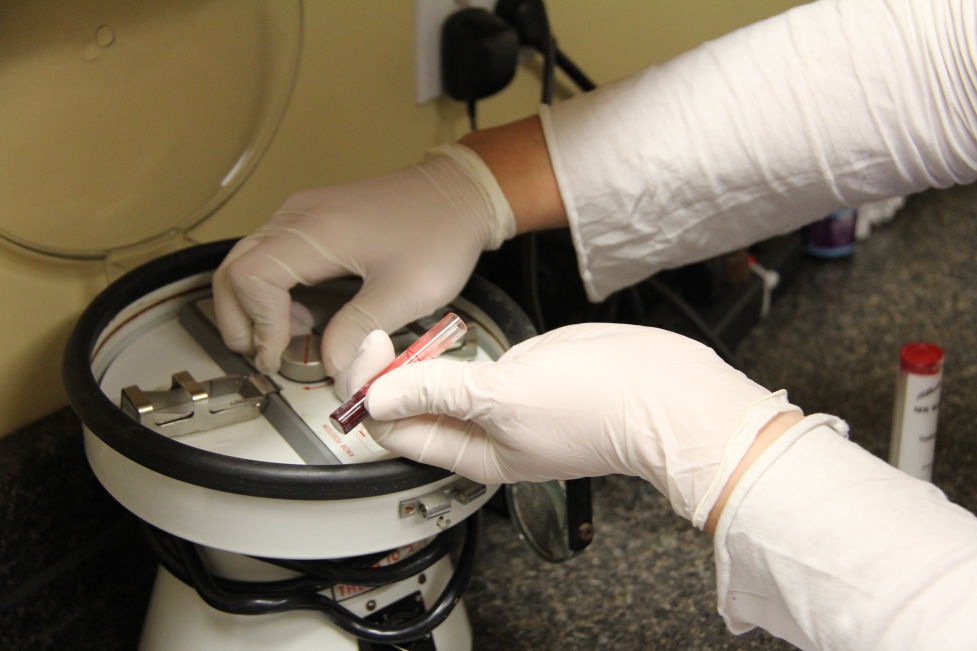HEALTH TOPICS
For Your Information
AAEP Horse Care Topics
Camelid & Small Ruminant Care
Newsletter (PDF)
Equine Vaccines (PDF)
LYME DISEASE
Organism: Borrelia burgdorferi; a bacterium that is transmitted to equines via Ixodes species ticks. The ticks will feed off a host mammal (most common is the deer and white-footed mouse), which is their natural host. They may ingest bacteria that are present in the blood of the mammal, becoming infected. When the tick then finds another host (i.e. an equine or human), they have the ability to infect the host with Borrelia burgdorferi bacteria.
Clinical Signs: The most common clinical signs that horses show after becoming infected include lameness in more than one limb, behavioral changes, muscle soreness, lethargy, stiffness and lowgrade fever. The lameness may be a generalized lameness that shifts from one leg to another. Some horses appear stiff all over and are uncomfortable in general. Some owners report significant changes in the attitude of their horses. These horses may simply be unwilling to work, while others may become extremely aggressive toward other horses and/or humans. Each case will be slightly different and not all cases will have all of the above signs. This fact can make diagnosis more complicated.
Diagnosis: Clinical signs are usually the first clue that a horse may have Lyme Disease. Because there are numerous causes of lameness in horses, this alone does not mean a horse has this disease. Definitive diagnosis is based on a blood test that detects the presence of antibodies in the horse’s blood. The blood test, however, may, in some cases, not distinguish between active infection and simply previous exposure to the bacterium. A more definitive test called the Western Blot is used to differentiate antibody resulting from infection to Borrelia burgdorferi vs other non-Lyme spirochetes. It can take up to 2.5 months for antibody to appear after an intial infection. More rapid tests are being developed to help in these cases. Identifying Borrelia burgdorferi DNA in a sample of synovial membrane from the inside of a painful joint would indicate active infection. Your veterinarian can help sort through the information and he or she will try to piece together a puzzle that may include all or some of the following components of Lyme disease:
– history of tick exposure
– living in an endemic region for Lyme Disease
– examination and other diagnostics (x-rays, blood work for other diseases, lameness evaluation, etc.) to eliminate Lyme Disease
– positive blood test results for Lyme Disease
– a positive response to Lyme Disease therapy
Treatment: There are several ways to treat Lyme disease. The most common therapy includes four weeks of intravenous oxytetracycline. Alternatively, one week of IV oxytetracycline followed by 4 to 6 weeks of oral doxycycline may be used. At the conclusion of therapy, antibody levels are reassessed to see if the organism has successfully been cleared from the horses’ body. Some veterinarians may recommend an oral supplementation of a probiotic, which helps maintain the health of the horse’s gastrointestinal tract while on antibiotics, to try to combat possible development of diarrhea. Anti-inflammatory medication may also be a part of the treatment protocol. This will soothe some of the discomfort the horse feels caused by Lyme Disease. It is important to note that, although antibody levels in the blood may decrease after antibiotic therapy, recurrence of clinical signs is not uncommon in many horses. Repeat treatment may be needed in these horses. Any horse that has previously been treated for Lyme disease should go on a doxycycline prior to receiving steroids for any other reason.
Prevention: Unlike most equine diseases, there is no equine-approved vaccine currently available for Lyme disease. The best prevention is tick control. By checking your horse daily for ticks, and safely removing them, you are taking a big step in avoiding Lyme Disease. If a tick is removed it should be identified to determine if it is an Ixodes spp. tick. Ixodes spp is the only species of tick in North America known to carry and transmit Lyme disease. If an Ixodes tick is removed, it may be beneficial to consider prophylactic antibiotic therapy. This should be discussed with your veterinarian. There are some commercial products that have been developed that contain the ingredient permethrin, which seems to be effective in repelling ticks. Being diligent about applying the repellant, in addition to routine checks of your horse’s body, should go a long way in preventing Borrelia burgdorferi infection. Keeping pasture grass mown will make the environment less hospitable for ticks. Try to remove brush, wood piles, etc. from pasture areas. This may help reduce some rodent nesting areas, which may help decrease tick populations. As always, if you suspect Lyme disease or any illness in your horse, consult your veterinarian for early diagnosis and treatment, as well as for advice on disease prevention.







